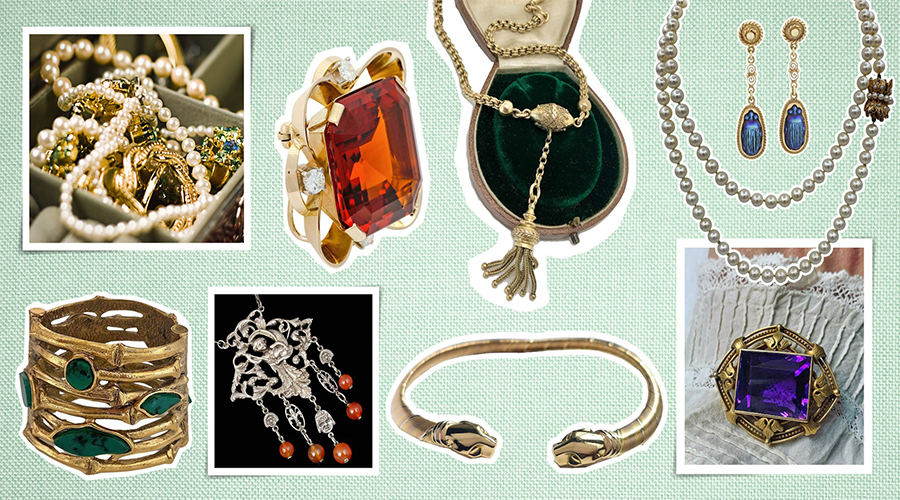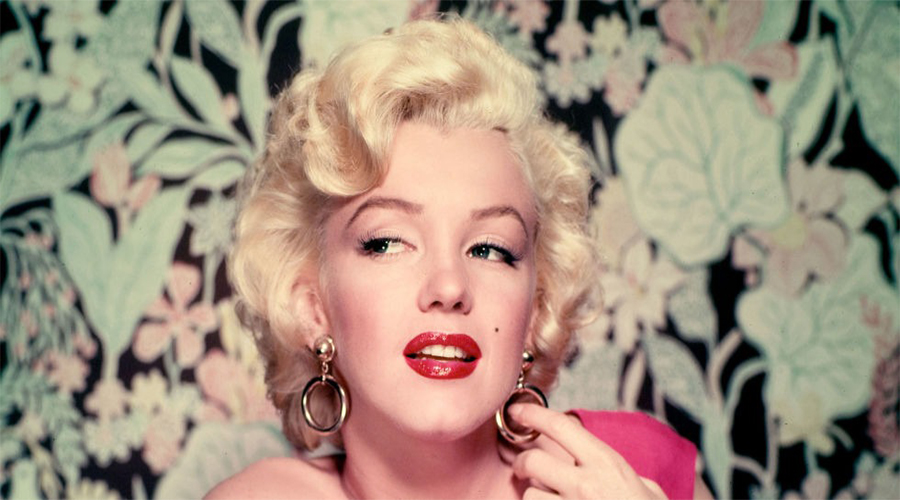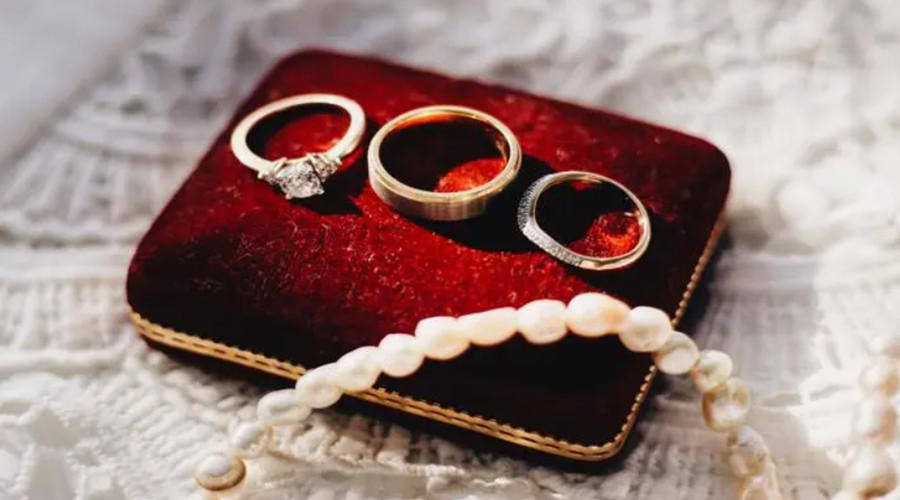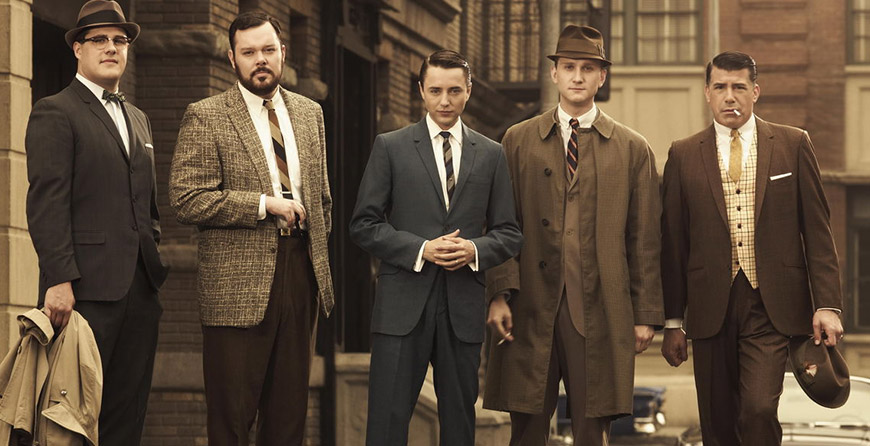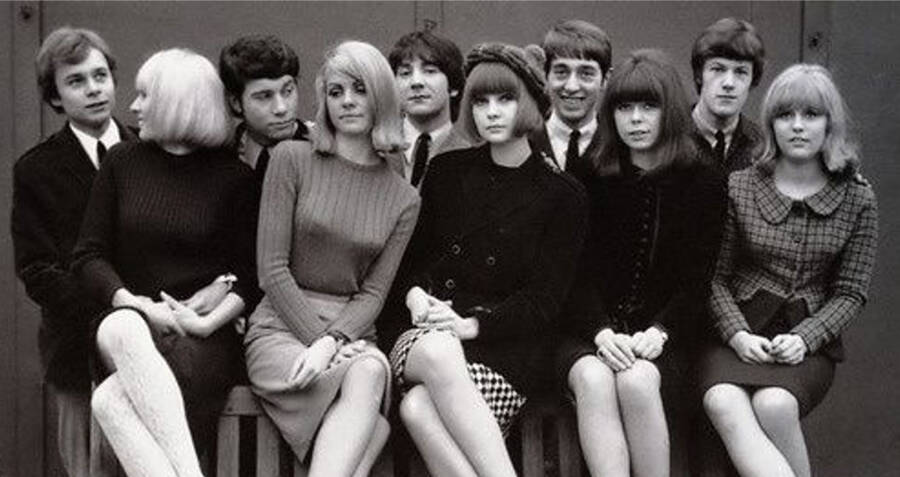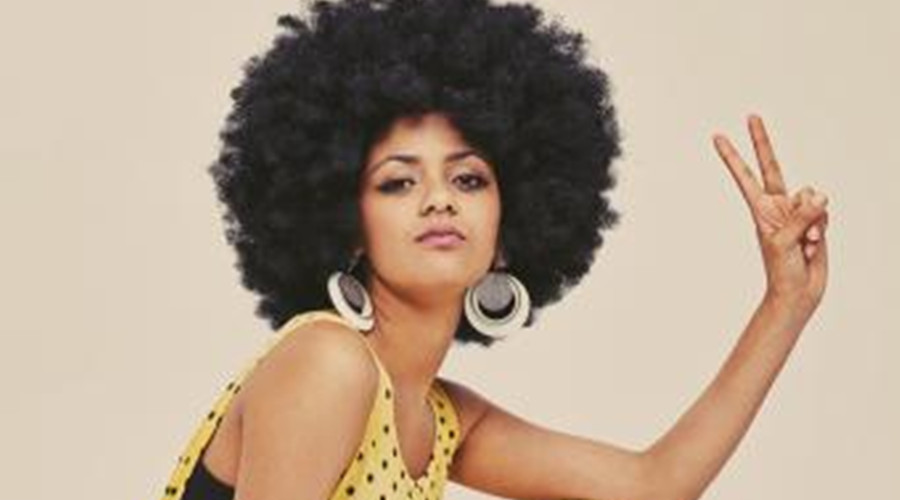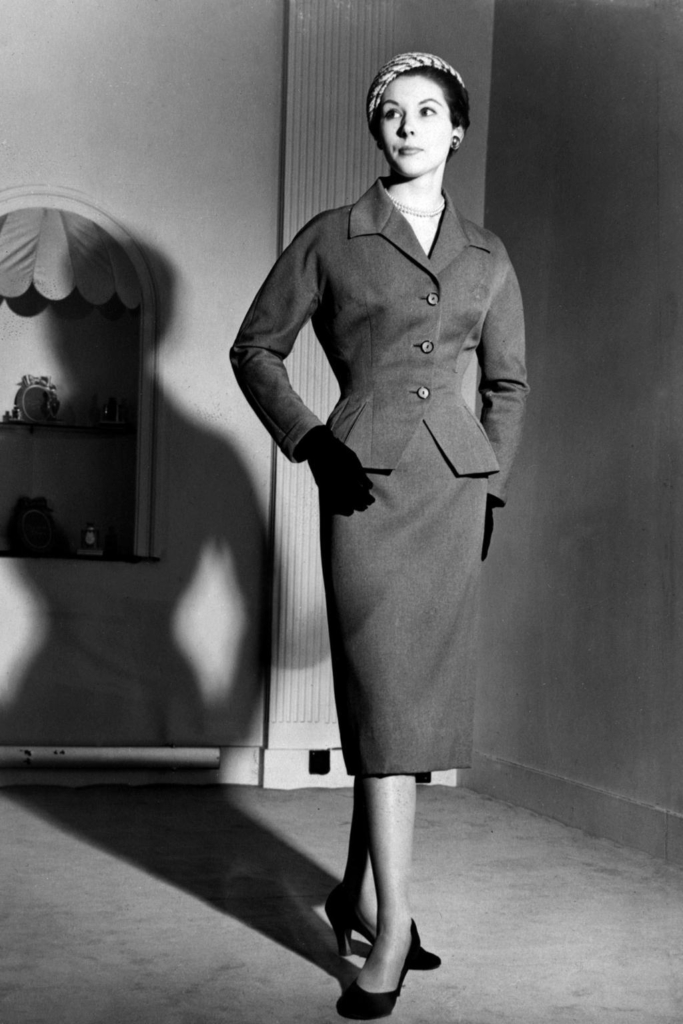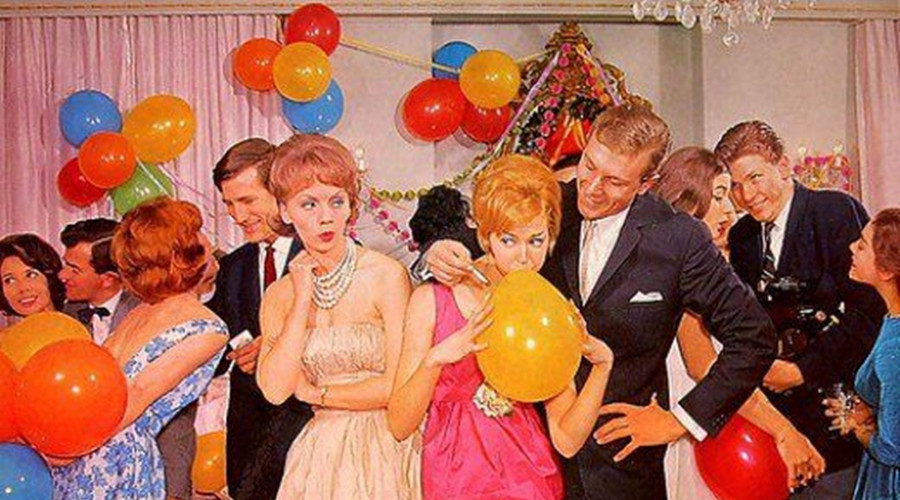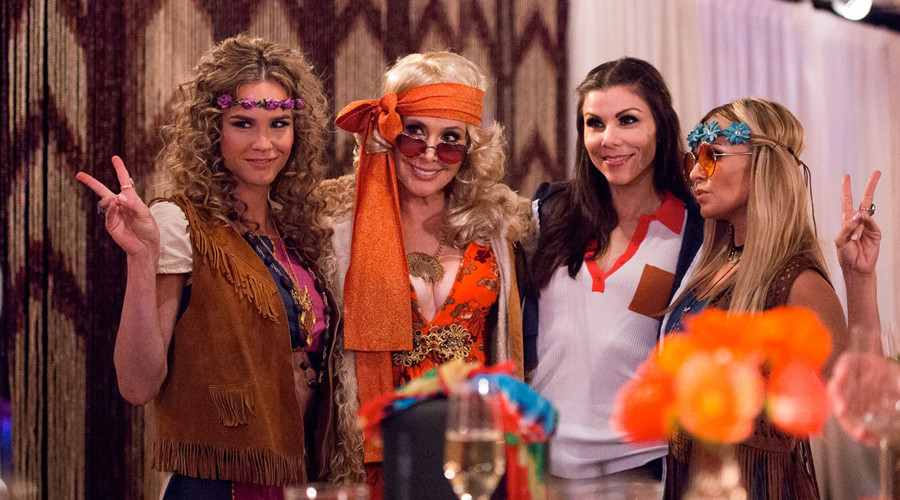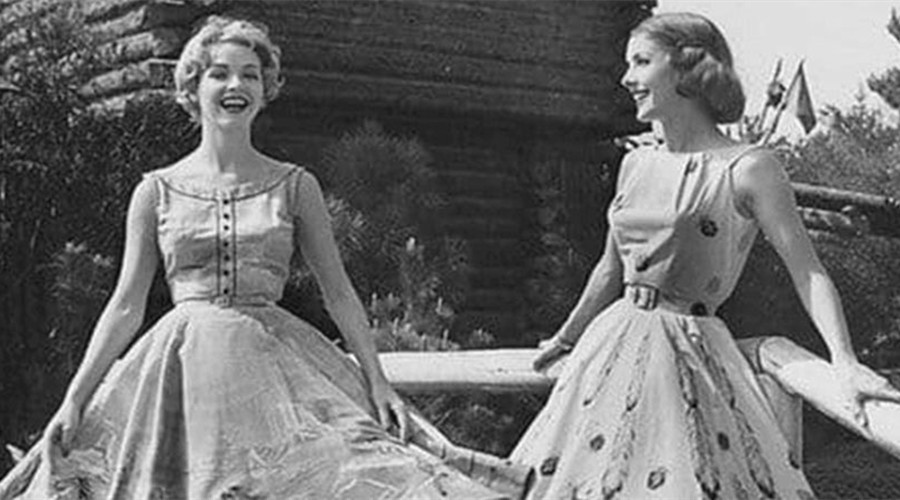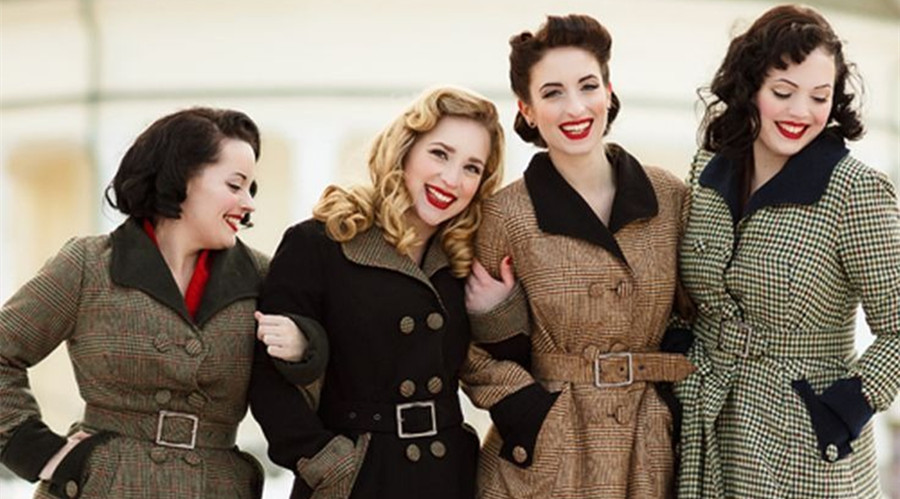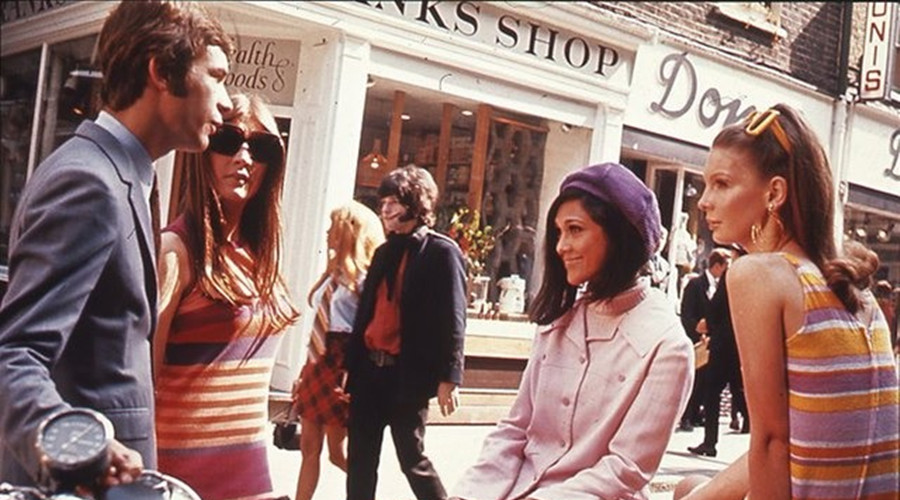Taking 1940s-1960s’ Outfit as an Example-Vintage Dress Better than Now
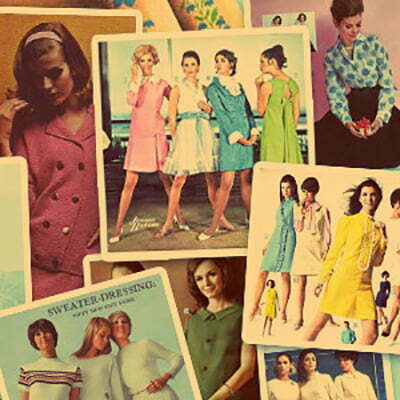
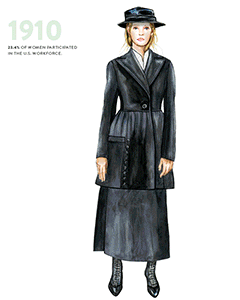 Sometimes, we prefer the vintage outfit rather than a popular outfit today, which illustrates that vintage clothes have their own unique. Why did people dress better in the past than they do now? There are a lot of elements involving in this question. Let us take the 1940s-1960s’ fashion as an example, discussing the 1940s to 1960s men’s or women’s fashion from a variety of aspects. Comparing their features of fashion in the 1940s, 1950s,1960s with the modern-day fashion trend, which can explain why people dress better in these times than now.
Sometimes, we prefer the vintage outfit rather than a popular outfit today, which illustrates that vintage clothes have their own unique. Why did people dress better in the past than they do now? There are a lot of elements involving in this question. Let us take the 1940s-1960s’ fashion as an example, discussing the 1940s to 1960s men’s or women’s fashion from a variety of aspects. Comparing their features of fashion in the 1940s, 1950s,1960s with the modern-day fashion trend, which can explain why people dress better in these times than now.
CHANGE OF THE HEMLINE
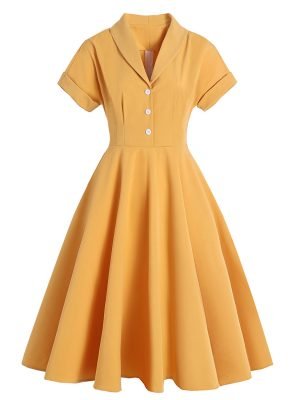
vintage-retro Yellow Dress Retro Lapel Swing Knee Length Dress
From $18.99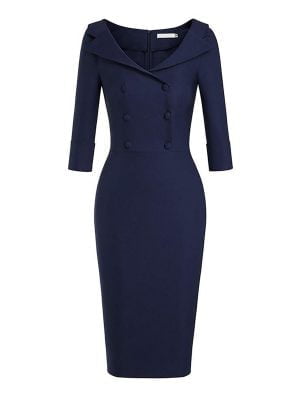
Pencil Dress Vintage Solid Color Double Breasted Wiggle Dress
$36.98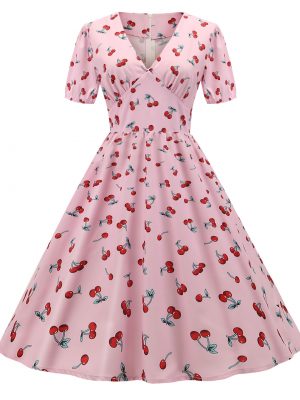
1950‘s Dresses ’Puff Sleeve Pink Cherry Print Dress
$29.99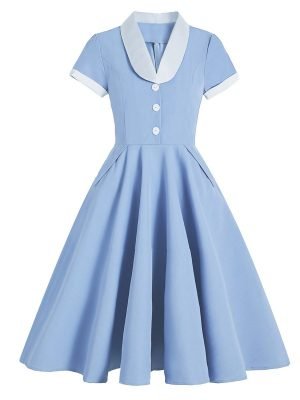
1950s Blue Dresses Short Sleeve Pockets Swing Dresses
$38.99The postwar 1940s
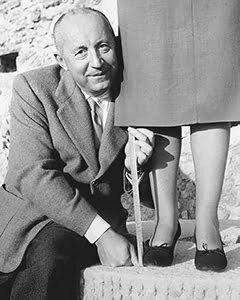 The postwar period was initially a transition of nostalgic style. The Victorian ball gowns and corsets became popular with the development of the “new look”. People quickly got tired of carrying all these fabrics with them, and Christian Dior’s H line (with pencil skirt) took over. The cautious mood after the war kept the skirts of medium length, but morale rose with the advent of new styles and dances to suit the new look.
The postwar period was initially a transition of nostalgic style. The Victorian ball gowns and corsets became popular with the development of the “new look”. People quickly got tired of carrying all these fabrics with them, and Christian Dior’s H line (with pencil skirt) took over. The cautious mood after the war kept the skirts of medium length, but morale rose with the advent of new styles and dances to suit the new look.
Teenagers are full of inventions from the 1950s
The 1950s brought more independence and freedom to young people. Teenagers begin to control their lives more and no longer want to look like the epitome of their parents. They express their new discoveries through their clothes and hairstyles.
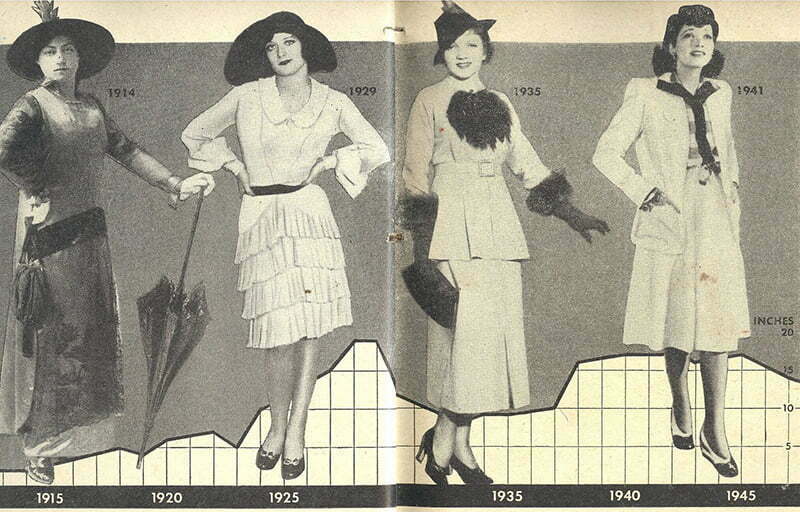
Swinging the 1960s
After the 50s, the 1960s saw an increase in the level of financial prosperity, and with the invention of teenagers-the miniskirt was born! This is the incarnation of a world, it wants to break through boundaries and innovate boldly.
Millennium Era
With the rise of female morale and empowerment, today’s skirts reflect this ability. Today, you can find all sides from long, medium to mini on the cover of today’s magazine!
Fashion trends have changed during the 1940s to 1960s
 The 1950s Fashion Trend
The 1950s Fashion Trend
Just like the 1920s, the style of the 1950s reflects the happiness of people after the war. The Second World War ended, and fashion changed. During this period of time, the skirts were worn by the women further showed their figure. The hairstyle changed from short hair in the 1920s to long curly hair. For men, the 1950s brought the “grease” style. These include men in jeans, white T-shirts, and black leather jackets.
FashionNow
Nowadays, people’s clothing is affected in many different ways. Some fashion choices are even based on looks from the past few decades, such as the ones we talked about here. Trends are always changing, but you can keep up with the latest trends by watching TV or watching what your favorite celebrities wear. Unless you like your way. In this case, just wear the clothes you like today!
COMPARING SKI FASHION FROM THE 1940S TO 1960S WITH THE PRESENT DAY
Skiing has been a well-known sport for a long time. During this period, many improvements were made not only in the material of the ski itself but also in the clothes we wear in cold weather to partially keep warm. Part of the reason is that it makes us feel like unique kings and queens. All we need is color and style, a) highlighting our best features, b) matching rosy red cheeks and blue lips.
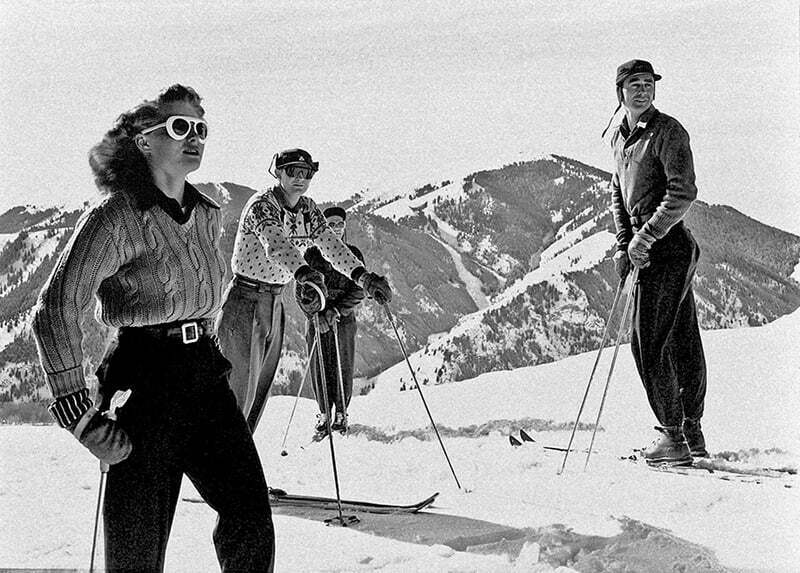
The 1950s Ski Fashion
Around the 1950s, women dressed up as toothpaste and men wore Christmas jumpers all season. Of course, we just pretend to remember them, and it is obvious that SnowSkool (except MD Phil) is still too young. The 1950s witnessed the rise of the greatest idols of all time, such as Elvis Presley and Marilyn Monroe. It was also a great time to ski because it was the first time Become a recreational sport.
The 1960s Ski Fashion
The sixties also attracted the attention of more ski lovers. Tighter, lighter clothes and high-fashion fabrics keep you warm while creating a more colorful and sexy look, which is different from other decades here. , It is still in good condition.
Changes in modern-day
Retro Ski Fashion
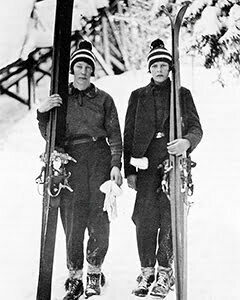 In fact, this is not all. In the past few years, the vigorous development of the snowboard industry and the rise of extreme winter sports have made skiwear brands emphasize innovation and technology. These innovations and technologies have brought some exciting new trends that are changing skiing. Experience-adds some futuristic tendency to the past in appearance. One example is Tuvie’s stylish, slightly threatening helmet, which also looks like a microphone.
In fact, this is not all. In the past few years, the vigorous development of the snowboard industry and the rise of extreme winter sports have made skiwear brands emphasize innovation and technology. These innovations and technologies have brought some exciting new trends that are changing skiing. Experience-adds some futuristic tendency to the past in appearance. One example is Tuvie’s stylish, slightly threatening helmet, which also looks like a microphone.
Ski Fashion of the Future
All in all, although you have been born for ten years or have chosen ski clothing, whether it is toothpaste fashion or neon jumpsuit, you should wear boots, goggles, and those impressive hats with huge bubbles, and then You can go out!
From an economic perspective: economical influence on American clothing manufacturing industry
The 1900s to 1940s
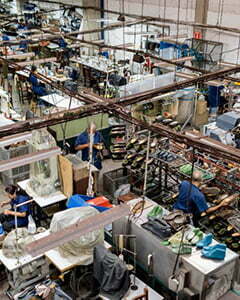 American families have become smaller and smaller, relying more and more on working women and computers instead of working children and farms. The most important thing is to become richer. Actually about 68 times richer. In the 20th century, household income (regardless of inflation) doubled six times, doubling on average every ten and a half years.
American families have become smaller and smaller, relying more and more on working women and computers instead of working children and farms. The most important thing is to become richer. Actually about 68 times richer. In the 20th century, household income (regardless of inflation) doubled six times, doubling on average every ten and a half years.
The 1950s
That was 1950. Compared with just fifty years ago, the United States is a different country. The population has doubled to 150 million. At the same time, the “manufactured” economy is at its peak. Almost half of the workers are craftsmen or operators. (The female labor force participation rate is still less than 20%.) Since 1901, factory wages have increased 7 times and have almost tripled since the Great Depression. The textile manufacturing industry has never had a higher level, and will never be higher. It was its highest peak in 1950. The clothing manufacturing industry will continue into the 1970s and then collapse in the last third of the decade. The United States is the garment capital of the world, and our dominance may be uncertain. Half a century later, the factories, like the farm in front of them, will become victims of American efficiency.
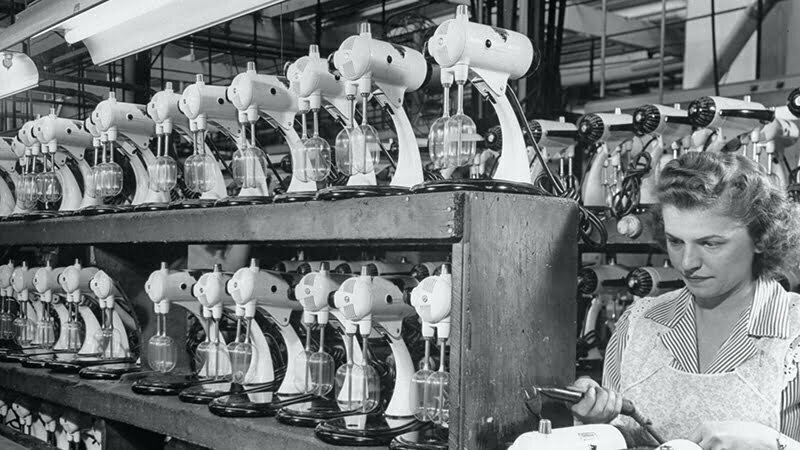
The 1960s to 1990s
In the past 50 years, the share of food and clothing in the household has fallen from 42% to 17% (remember, we were close to 60% in 1900) because we discovered cheaper ways to eat and dress. Food production has become more efficient, and we have moved garment manufacturing to other countries where labor costs are lower. As a result, the share of clothing has hardly changed in the first half of this century but has shrunk by two-thirds in the second half. Since the 1950s, government spending on social security, medical insurance, and medical subsidies has tripled, which is the most meaningful measure, as a percentage of GDP.
Modern-day
Even higher ed is a necessity for today’s middle class. We have new expectations for what our money should buy. We have earned (literally) the right to expect more from life in America. Historical context shouldn’t cheapen middle-class suffering. Today’s suffering is real. Unemployment is high. Wage growth is flat. We are squeezed by rising health care costs and scarcity of affordable housing in productive cities. And yet, who can deny that we are richer? A century ago, we spent more than half our money on food and clothes. Today, we spend more than half of our money on housing and transportation. Our ambitions turned from bread and shirts to ownership and highways. We are all subtle victims of the expectations that 100 years of wealth have bought.
The change of vintage fashion: out of fashion for male headwear
The 1940s Men’s Fashion
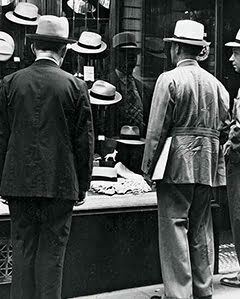 After the war, men at war were reluctant to wear hats on plain clothes. In 1947, a survey conducted by the Hat Research Foundation (Hat Research Foundation, a real organization) found that the main reason for 19% of men who did not wear a hat was “because I had to join the army.” Newspapers in 1948 expressed regret for the new “baldhead” fashion, but they soon realized that this decline may be permanent. “In hating towns, workers saw that their livelihoods were threatened and abused those who dared to walk on the street with their heads bare.” In England, there were even reports of daring to work in hating towns such as Denton and Manchester near Manchester. (Stockport) people who walked barefoot were abused by workers who saw their livelihoods threatened. In fact, using the FA Cup final as a barometer, this concern seems to have been confirmed. The photo between Manchester United and Blackpool in the 1948 FA Cup final shows a comparison with a fan without a hat, and it is worth remembering that they are all standing on the court with no protection from the rain, so the hat would be a wise idea.
After the war, men at war were reluctant to wear hats on plain clothes. In 1947, a survey conducted by the Hat Research Foundation (Hat Research Foundation, a real organization) found that the main reason for 19% of men who did not wear a hat was “because I had to join the army.” Newspapers in 1948 expressed regret for the new “baldhead” fashion, but they soon realized that this decline may be permanent. “In hating towns, workers saw that their livelihoods were threatened and abused those who dared to walk on the street with their heads bare.” In England, there were even reports of daring to work in hating towns such as Denton and Manchester near Manchester. (Stockport) people who walked barefoot were abused by workers who saw their livelihoods threatened. In fact, using the FA Cup final as a barometer, this concern seems to have been confirmed. The photo between Manchester United and Blackpool in the 1948 FA Cup final shows a comparison with a fan without a hat, and it is worth remembering that they are all standing on the court with no protection from the rain, so the hat would be a wise idea.
The 1950s Men’s Fashion
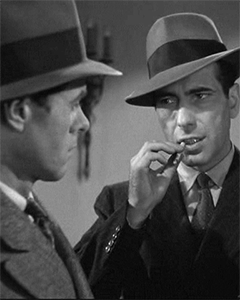 In 1953, columnist Hal Boyle (National Hat Weekly) suggested that they might be on the road because people “hate their two park pork pie (a kind of hat) every time they go to a nightclub” and warned that this hat might It is “…the vest is the same as the high-button shoes”. The fact that those with commercial interests invented “National Hat Week” shows that Hal’s statement may have some truth-but the reduction in the number of hats is gradual because some older generations continue to wear hats out of habit.
In 1953, columnist Hal Boyle (National Hat Weekly) suggested that they might be on the road because people “hate their two park pork pie (a kind of hat) every time they go to a nightclub” and warned that this hat might It is “…the vest is the same as the high-button shoes”. The fact that those with commercial interests invented “National Hat Week” shows that Hal’s statement may have some truth-but the reduction in the number of hats is gradual because some older generations continue to wear hats out of habit.
Modern-day Men’s Hat
Of course, hats are still in fashion, and there is a style that is very popular now. At present, baseball caps are becoming a “trend” and their sales are soaring. Top Man said its sales increased by 26% year-on-year, while online retailer Asos said its sales more than doubled. At the same time, anyone wearing a bowler hat looks like an idiot. The last time a great man wore a top hat was before John F. Kennedy took office. However, Kennedy removed it before giving the speech. Many people mistakenly referred to Kennedy’s speech as the “hatless era” of accelerated recession, but in fact, the recession began a few years ago.
The unique of 1940s fashion: more special than today
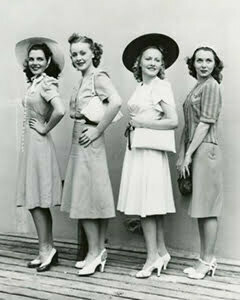 When we think of fashion in the 1940s, we might think of the charm of Pin-Up in the 1940s and the practical style of wartime army girls. We thought of the extremely feminine floral-print tea dance dresses, wedges, and brogues in the 1940s. But this is also an era. Designers have expanded their innovation limits through tightening guidelines, created simple and beautiful draping techniques, and introduced bevels on skirts and shoulder pads, creating what we are today in the simplest style Appreciate the fabulous Film-Noir style.
When we think of fashion in the 1940s, we might think of the charm of Pin-Up in the 1940s and the practical style of wartime army girls. We thought of the extremely feminine floral-print tea dance dresses, wedges, and brogues in the 1940s. But this is also an era. Designers have expanded their innovation limits through tightening guidelines, created simple and beautiful draping techniques, and introduced bevels on skirts and shoulder pads, creating what we are today in the simplest style Appreciate the fabulous Film-Noir style.
The clothing of the 1940s provides us with a good example of how political, cultural, and social “environment” influence fashion. Since Dior launched a new layout in 1947, the years of this decade have actually represented the classic look of the 1940s.
1950s special culture and style produced a new costume
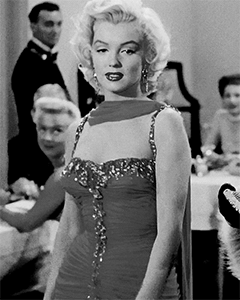 The style of dance costumes on stage and swing dance is reflected in the public fashion at this time. On the contrary, dance costumes at this time are also increasingly influenced by the fashion and style of American culture. In the 1950s, the catsuit became more feminine and skirts became less conservative to satisfy men’s preference for legs. During this period, the desire reflected in the legs became the main focus of dance costume designers and dance. In Hollywood, the sexual attraction of dancers in the 1950s especially made them the hottest stars of the time.
The style of dance costumes on stage and swing dance is reflected in the public fashion at this time. On the contrary, dance costumes at this time are also increasingly influenced by the fashion and style of American culture. In the 1950s, the catsuit became more feminine and skirts became less conservative to satisfy men’s preference for legs. During this period, the desire reflected in the legs became the main focus of dance costume designers and dance. In Hollywood, the sexual attraction of dancers in the 1950s especially made them the hottest stars of the time.
The 1960s fashion affected today’s fashion deeply
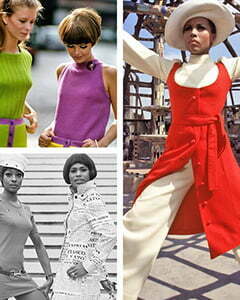 Susan Greene deleted a disposable gown from the collection of the Chemung Historical Society in Elmira, New York in 2002, and then donated a disposable gown. This is not a fashion anomaly in the 1960s, but a fashion trend. From the space age to maternity wear, from designer styles to styles produced by Campbell’s Soup Company, disposable paper dresses are a symbol of fashion in the 1960s and an early example of fast fashion.
Susan Greene deleted a disposable gown from the collection of the Chemung Historical Society in Elmira, New York in 2002, and then donated a disposable gown. This is not a fashion anomaly in the 1960s, but a fashion trend. From the space age to maternity wear, from designer styles to styles produced by Campbell’s Soup Company, disposable paper dresses are a symbol of fashion in the 1960s and an early example of fast fashion.
Fast fashion is often regarded as a contemporary phenomenon in the industry. Contrary to popular belief, the origin of fast fashion is not recent but has many possible historical roots. I think one of the origins is the space-age movement in the 1960s. The 1960s triggered a wave of social and political turmoil, including a second wave of feminism, civil rights movements, anti-war activism, sexual revolutions, and various other youth-based countercultural movements. The fashion industry attracts all kinds of sports with novel and expressive fashion. In order to keep up with the ever-changing experimental trend, designers designed paper garments that can be produced and consumed quickly and cheaply.
In conclusion, a lot of vintage fashion in many aspects has changed to fast fashion in modern-day gradually, which means fashion today may not be classic. That is the main reason why people dress better in the 1940s-1960s than they do now.

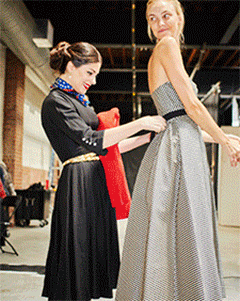 The 1950s Fashion Trend
The 1950s Fashion Trend